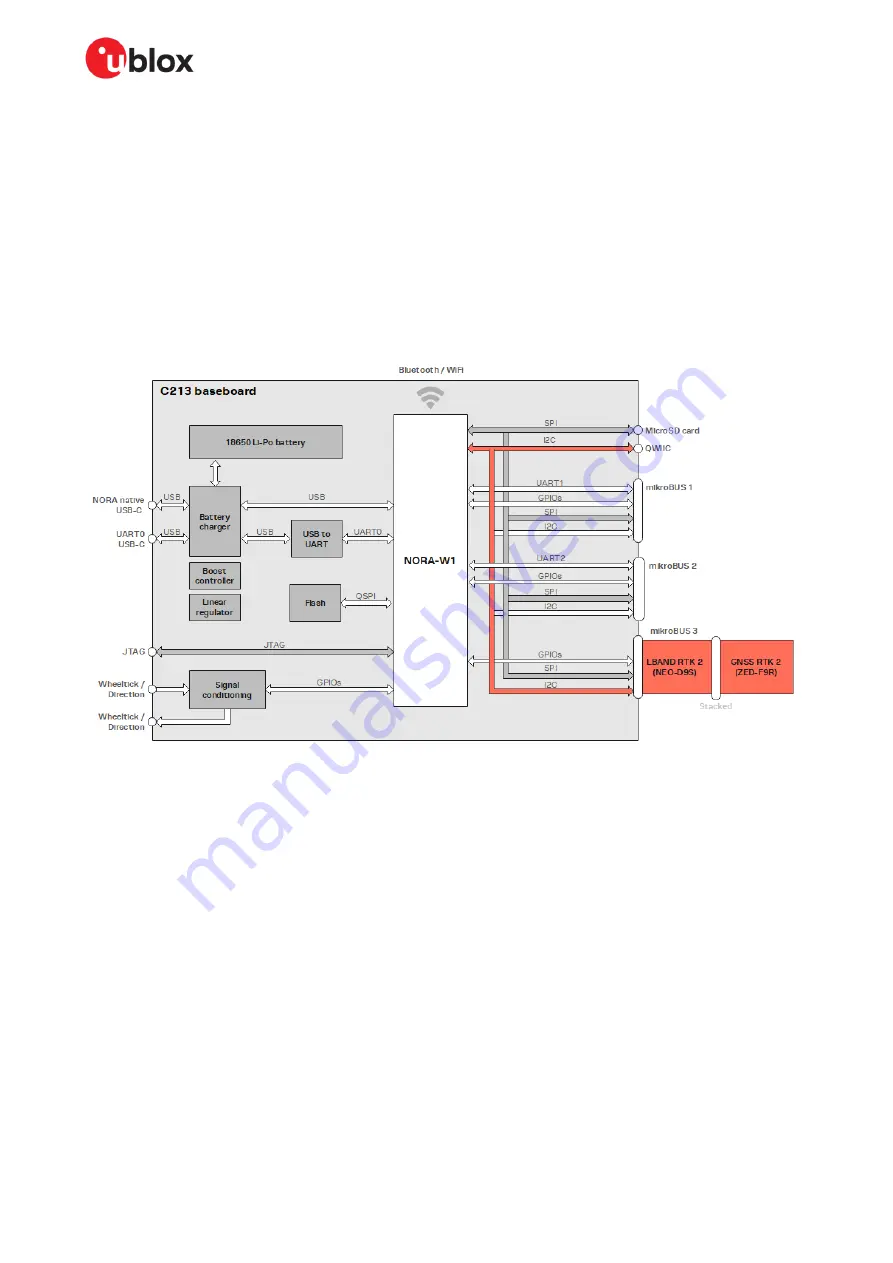
XPLR-HPG-1 - User guide
UBX-23000692 - R01
Product description
Page 10 of 37
C1-Public
1.5.1
Case #1: Correction data over L-band satellite
In this scenario, the NEO-D9S module, hosted on the L-band RTK Click board, receives correction data
from L-band satellites. NEO-D9S frequency range is 1525 MHz to 1559 MHz. The acquired correction
data is transmitted to the NORA-W106 module via the I2C interface.
As a pre-requisite for using this configuration, it is necessary to physically stack the ZED-F9R Click
board on top of the NEO-D9S. In this way, the modules share correction data with NORA-W106 over
I2C. This means that NORA-W106 is not involved in the computation of correction data between NEO
D9S to ZED F9R.
The active components in this use case are highlighted red in
Figure 3: Correction data flow (L-band)
NORA-W106 forwards the decryption keys for the correction data packages to ZED-F9R. The
decryption keys, which change monthly, can be downloaded from the internet using the Message
Queuing Telemetry Transport (MQTT). The keys are downloaded over the Wi-Fi/Bluetooth connection
through NORA-W106 or otherwise over a cellular connection through other third-party Click boards.
For the example software, build instructions, and description of this use case configuration, see also
Correction data via NEO-D9S LBAND module to ZED-F9R with the help of MQTT (using certificates)











































